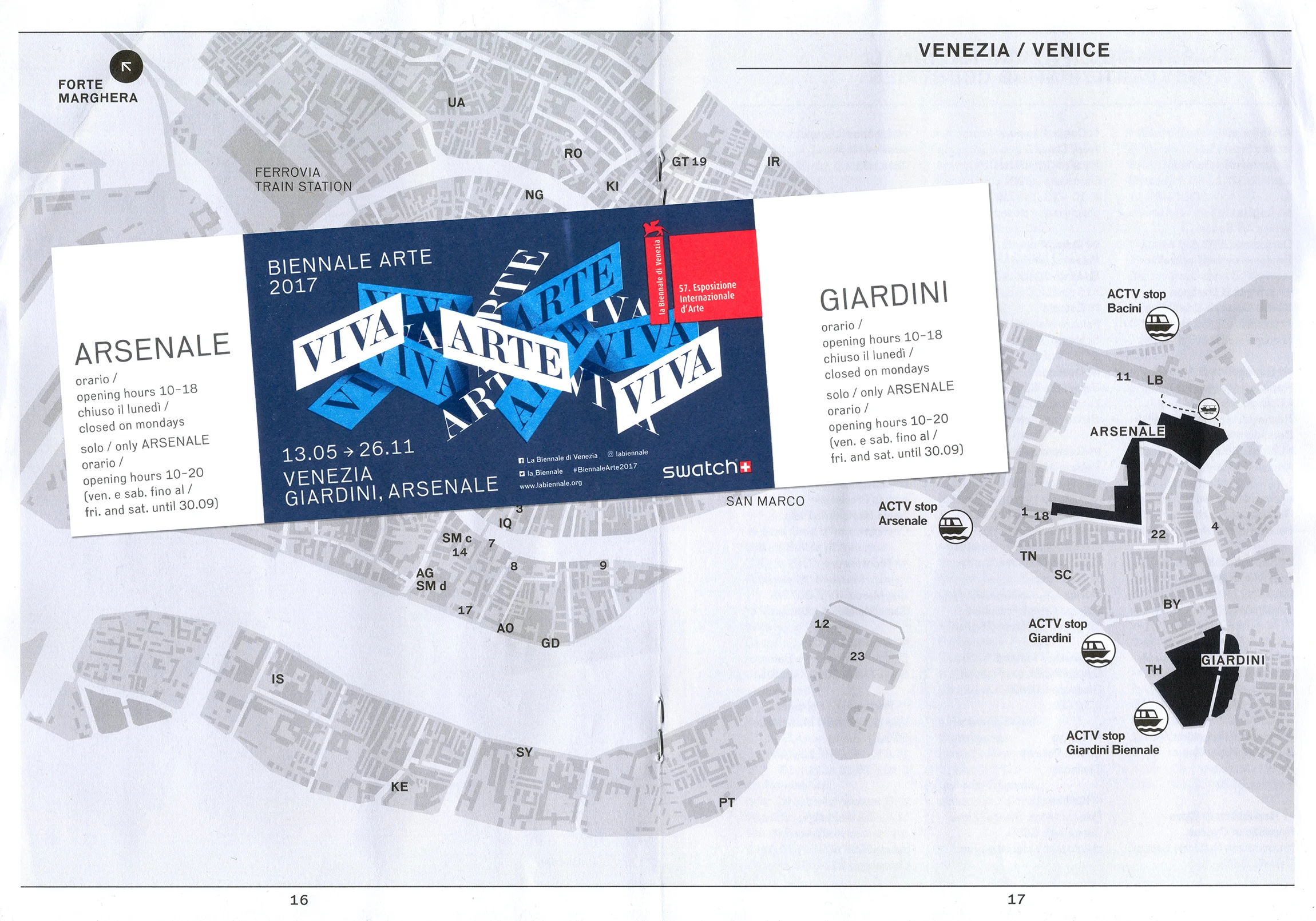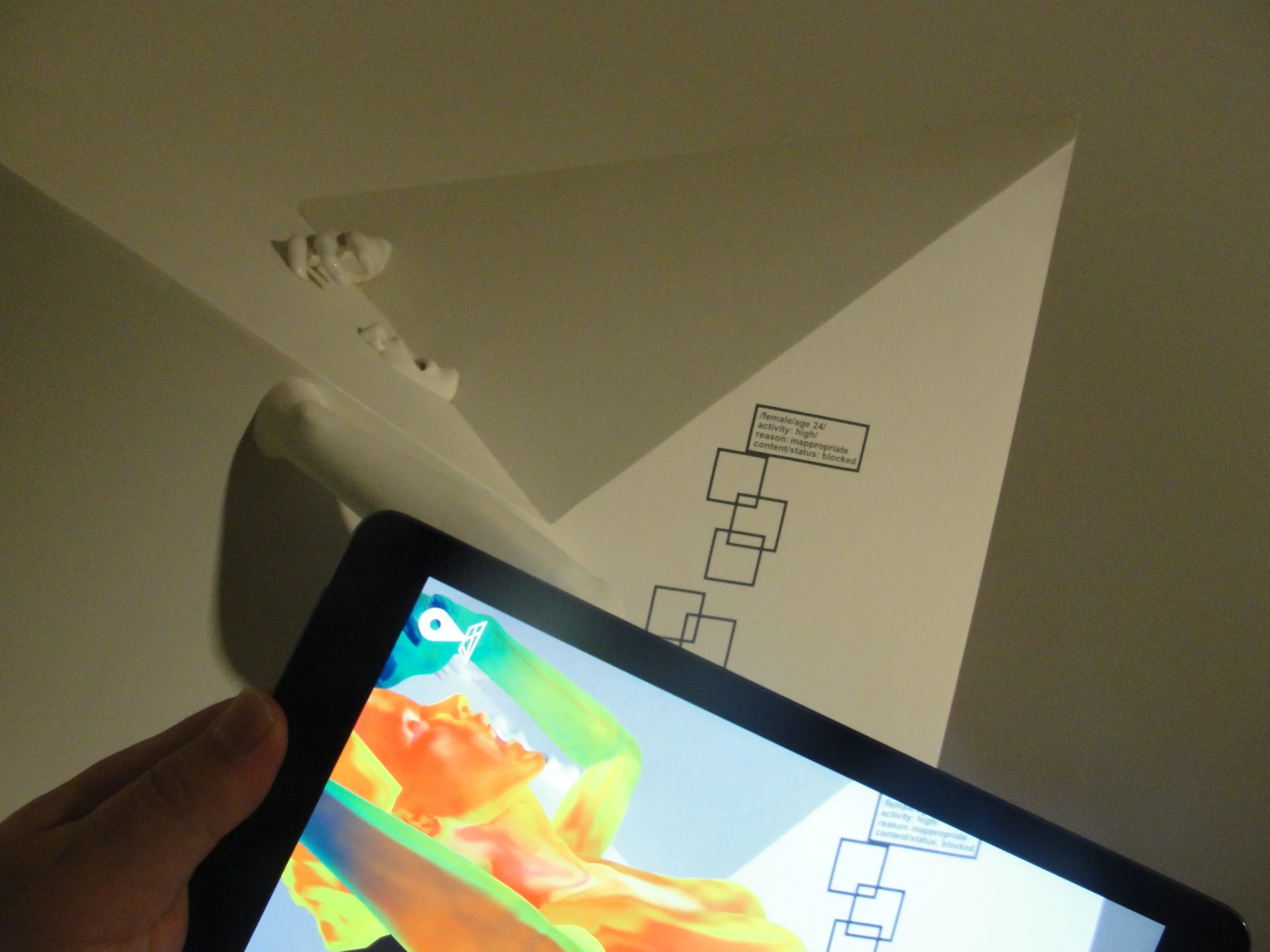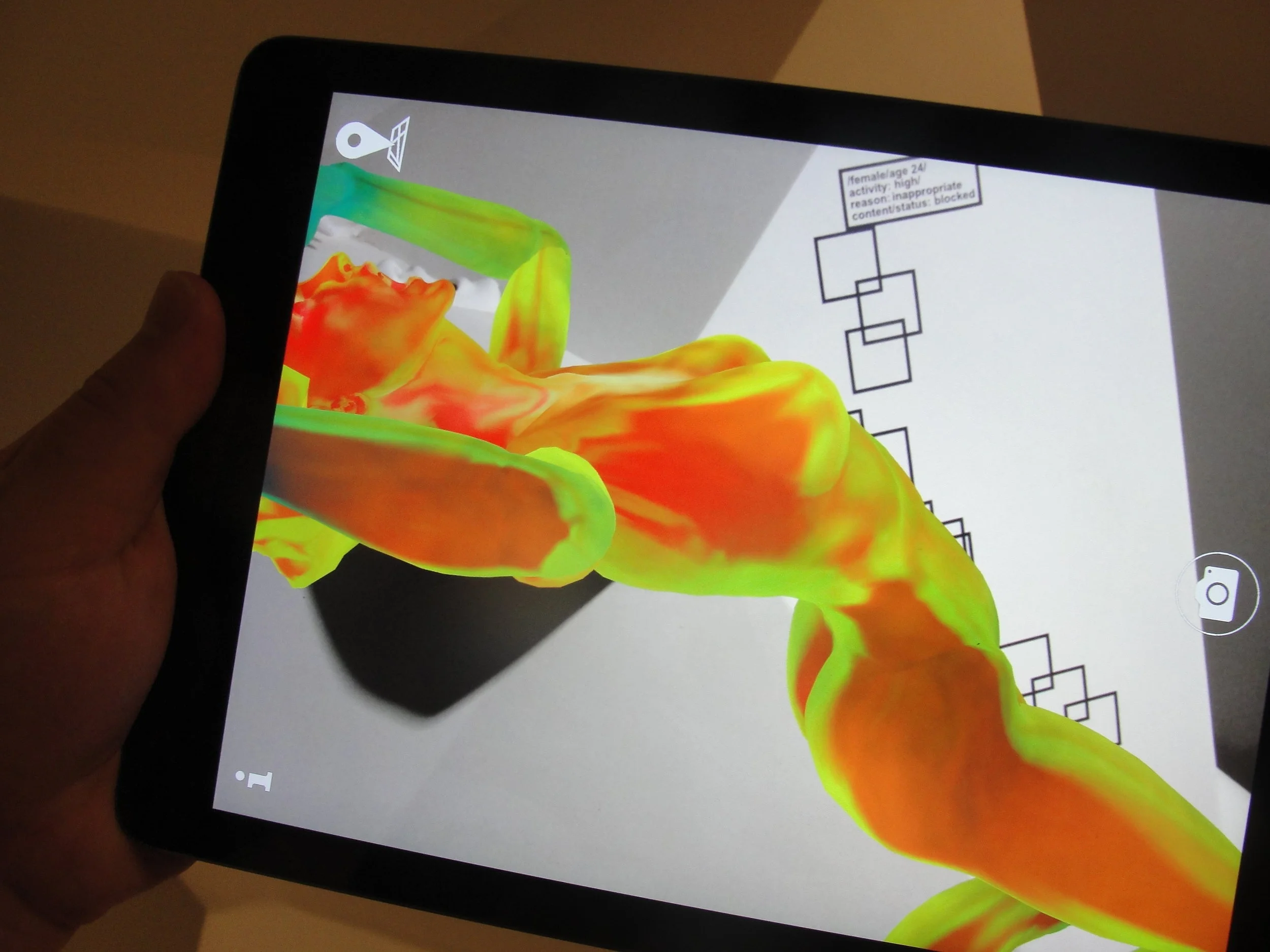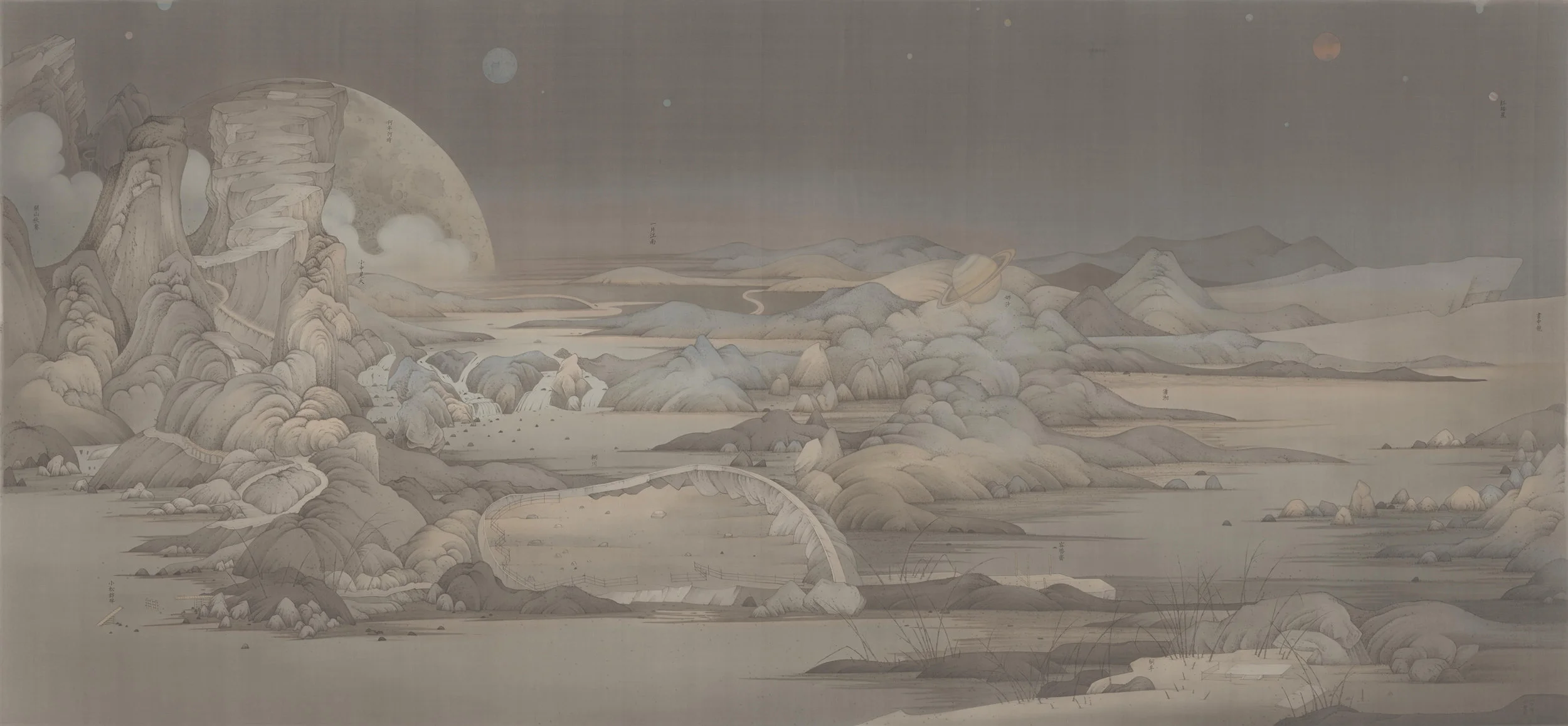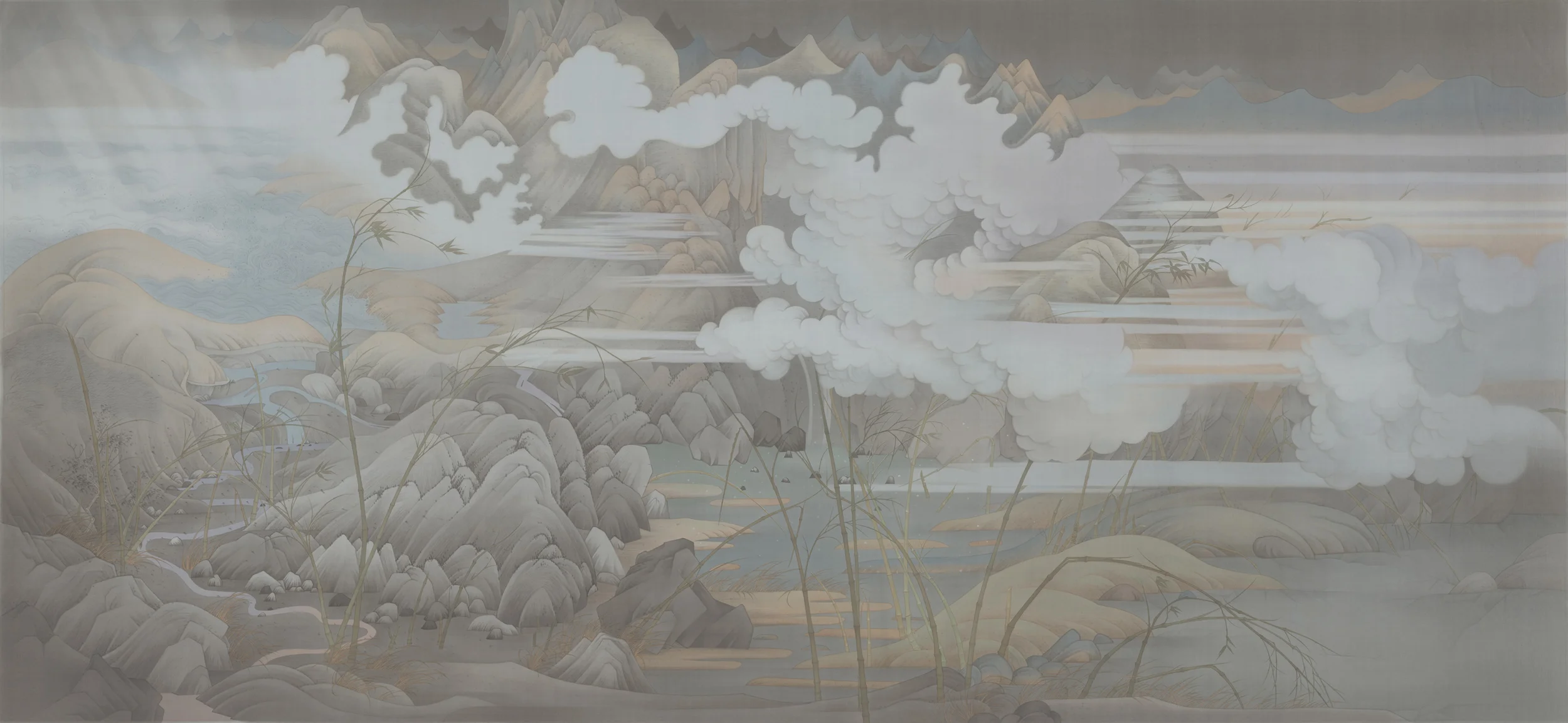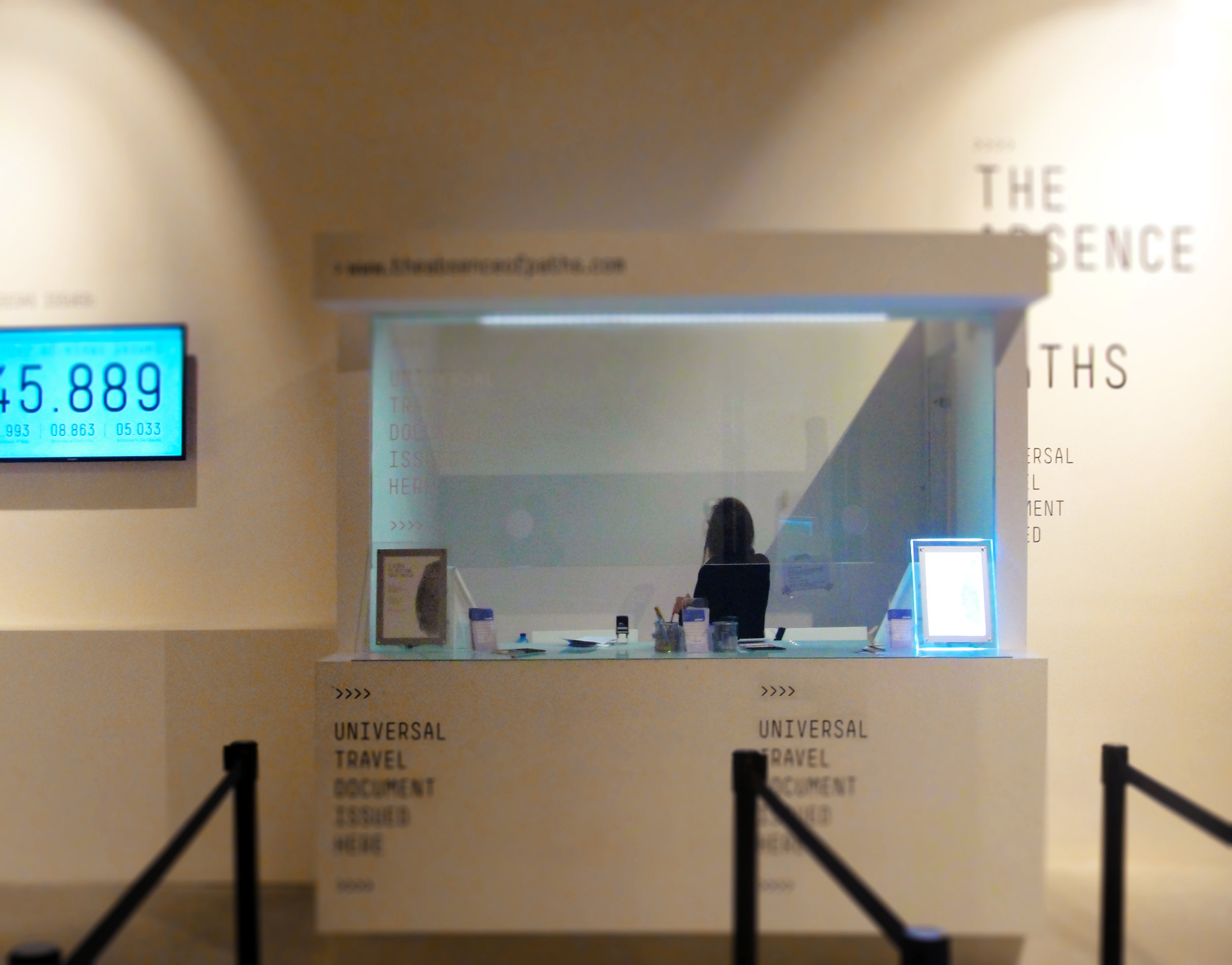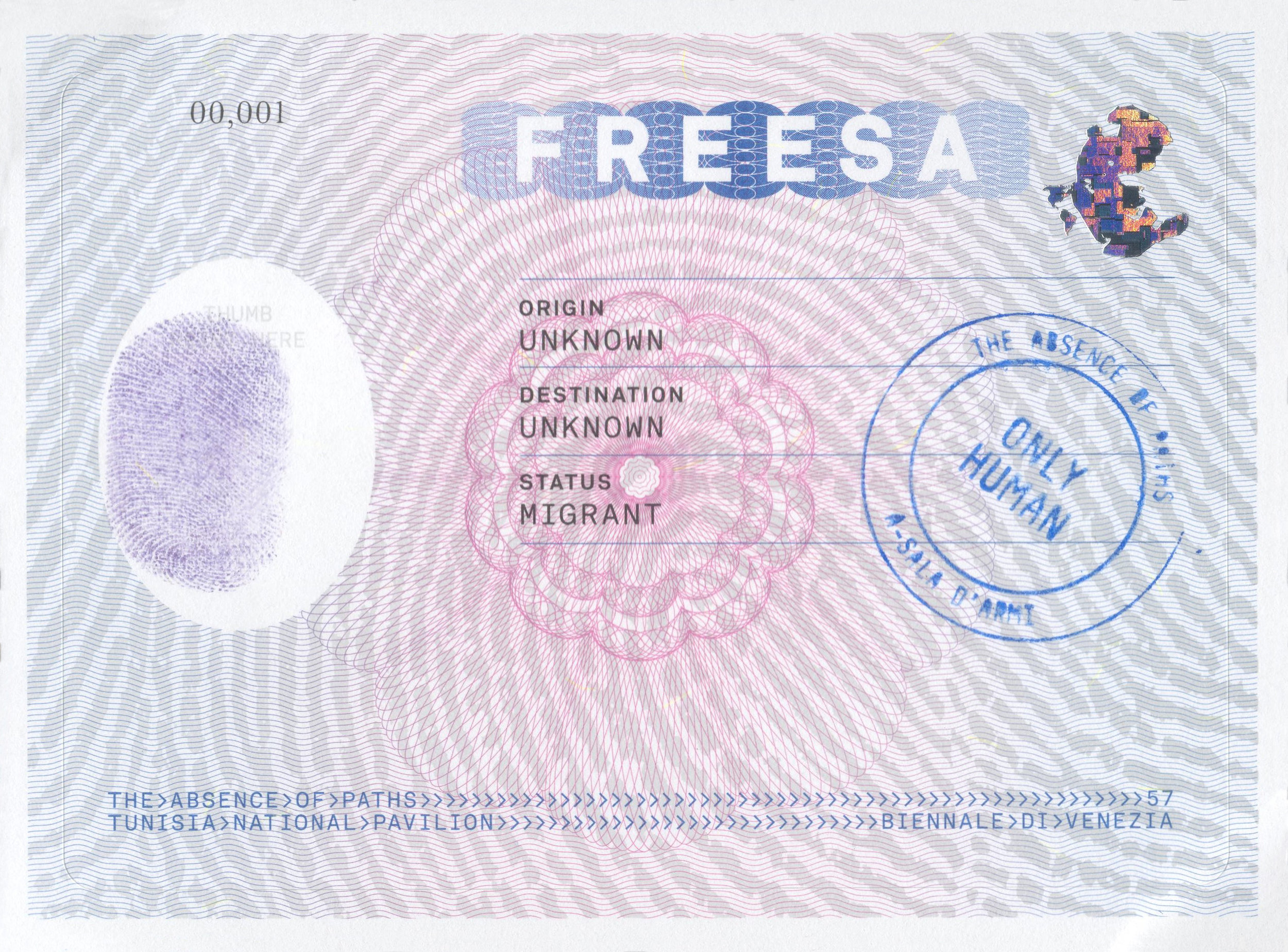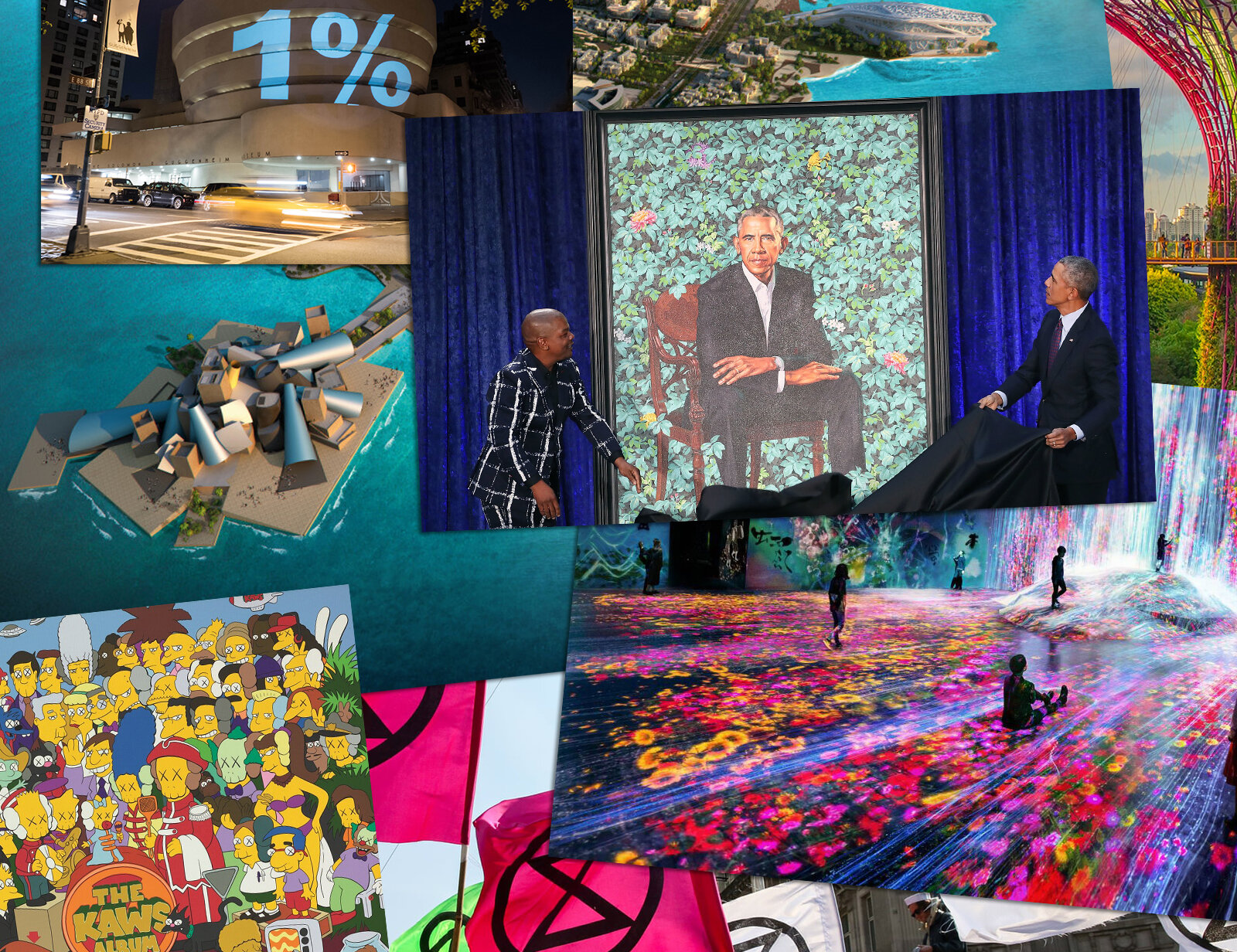What is the Venice Biennale? (+ 2017 highlights)
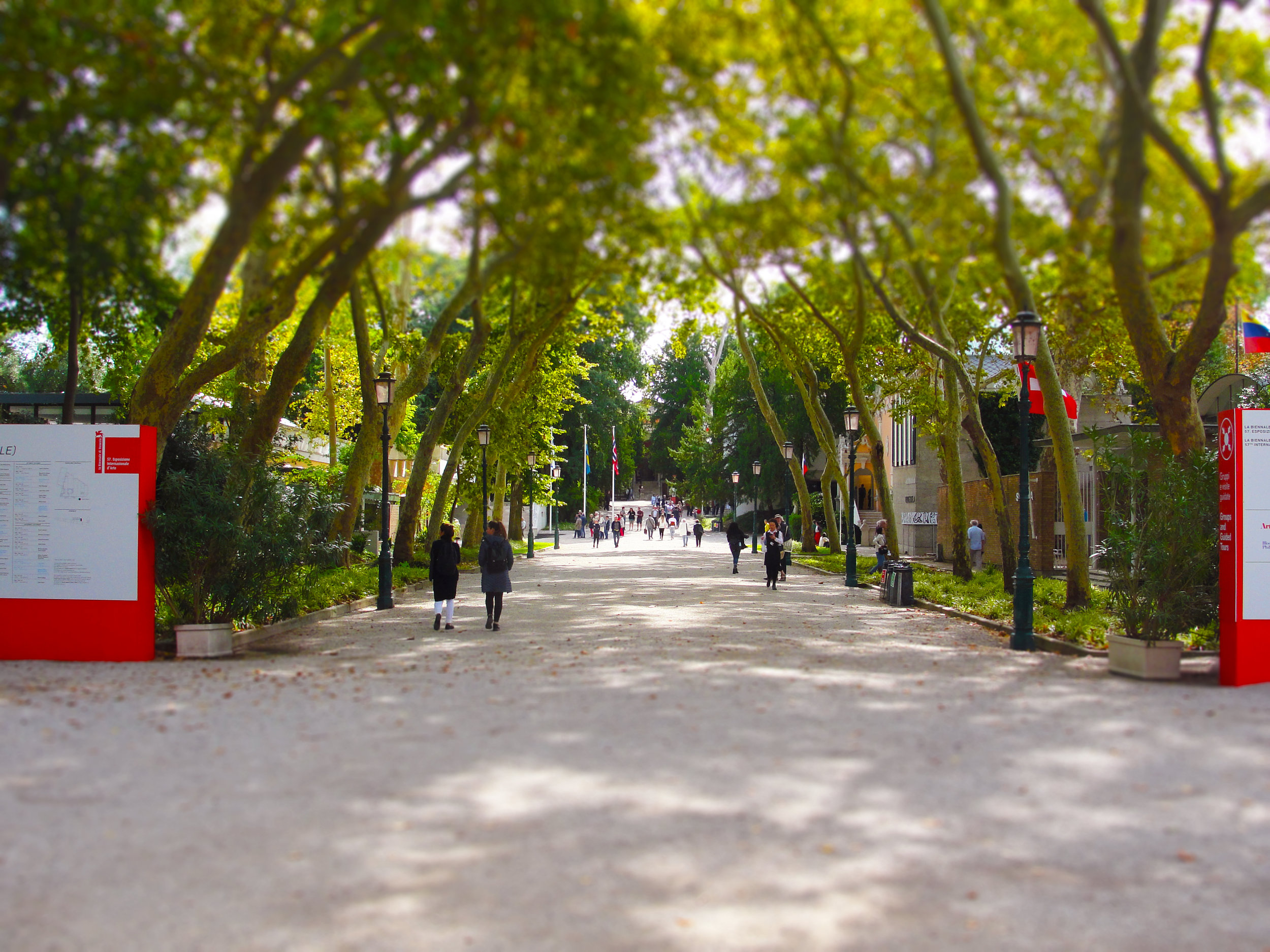
Once again, it’s the year of the Venice Biennale. What is it and who cares?
Cover Photo: Entrance to the Giardini della Biennale (Biennale Garden), Venice, Italy (2017).
The Biennale
The Venice Biennale, nicknamed the “Art Olympics”, is an extensive art festival that takes place every two years featuring the best artists around the globe. It is considered the most important event in the art world.
The first Venice Biennale took place in 1895, established by the Venetian City Council with the goal of showcasing the best of contemporary art. The Biennale has taken place every two years since then and has only been interrupted by the World Wars.
16 countries participated in the first Biennale and 200,000 people visited the event. Now, over 80 countries are represented and the Biennale consistently attracts half a million visitors. The Venice Biennale is an important talent showcase as it anticipates and shapes trends in the art world and featured artists enjoy increased market success.
The Biennale exhibition takes place primarily between two dedicated spaces in the city of Venice: the Giardini (Garden) and the Arsenale (Arsenal). There are also collateral events throughout Venice, sanctioned by the Biennale, as well as unofficial exhibitions, seeking to capitalize on the influx of art-loving tourists.
How are artists chosen?
The curator, appointed by the Biennale, chooses the majority of the artists, however, artists specifically representing in national pavilions are chosen by their respective country. “Every country has a unique process of selecting for the national pavilions at Venice. The US, in the recent past, has usually had curators, mostly acting on behalf of museums, submit proposals for viable artists to the State Department’s Bureau of Educational and Cultural Affairs. The State Department then chooses a commissioning institution, usually a museum, which in turn selects the artist.” Notable artists featured at the United States Pavilion include Alexander Calder, Jenny Holzer, and Robert Rauschenberg.
What is contemporary art?
I have had multiple friends tell me that they don't like contemporary art, only they call it modern art and they describe it as abstract art. The statement is technically correct but generally misinformed. Unlike in general lexicon, contemporary art and modern art are not synonymous! Trends can be hard to recognize and some historians do disagree, but hopefully, the following definitions will help to correct any misconceptions.
Modern art describes art that rejects academic tradition and conservative ideals, lasting approximately from the 1860s to 1970s. Édouard Manet is called the first Modern artist, with art historians pointing specifically to his 1863 painting, Luncheon on the Grass, as starting the era. Modern art includes Impressionism, Fauvism, Cubism, Futurism, and Expressionism, among other movements.
Frank Stella, best known for his Protractor series, has worked as a modern artist, an abstract artist, and is a contemporary artist, as he continues to make art. Abstract art is simply art that does not attempt to visually represent reality, starting in the modern art era.
Contemporary art is created today, absent of any historical context (when artists are described as contemporaries, it means they are or were living at the same time). Jeff Koons works today, therefore he is a contemporary artist. Koons is also a postmodern artist, rejecting the ideals of modern art (pop art is generally accepted as the beginning of postmodernism).
Contemporary art can be anything and everything, in any medium and subject, as long as it was made today (or in the recent past). Contemporary art is vital to society because it is made of and about the materials and topics of our time.
Criticism of the Biennale
An event as large, important, or influential as the Biennale does not exist without critics. Notably, the Venice Biennale has been accused of commercialization and it has been justly pointed out the Biennale disproportionately represents old white men.
The Biennale was founded, in part, to create a new market for contemporary art, and indeed selling was sanctioned in 1942, cutting out art dealers and angering left-wing students. An official sales office was operated by dealer Ettore Gian Ferrari with a 10% commission dedicated to the Biennale organizers. Students finally protested in 1968, denouncing the Biennale as a “playground of the rich”. A massive police presence was deployed and various countries threatened to withdraw. The sales office was closed but, of course, sales still continue. International dealers peruse the show and works from in-demand artists have probably been sold before the exhibition has even opened.
Korean artist Cody Choi, who exhibited in 2017, explains,
Personally, I have nothing against the nearly $70 billion art market, nor do I care about a dealer presence. I think it’s naive to expect everyone involved to love art for art’s sake. However, trends in the market are concerning. The global art market is becoming increasingly concentrated in fewer dealers. Despite a 6% growth in 2018, 57% of dealers experienced a sales decline.
The most pressing criticism of the Biennale, is that, like many historic institutions, the Venice Biennale disproportionately represents old white men. Artsy ran the numbers on the 57th edition, and you can see some of the results below.
The Biennale is the largest international art exhibition but it has continued to favor white males from the Northern Hemisphere. In 2017, almost two thirds of the artists were male and nearly 60% of artists were from Europe or North America. Over 40% of artists represented in 2017 were between the ages of 41 and 60, but this is more palatable as artists generally must mature in their career prior to having the necessary acclaim and interest to be featured. The Biennale has slowly improved in representation over the years. The 58th Biennale, in 2019, is promised to have gender parity for the first time ever!
The 2019 Biennale
The 58th International Art Exhibition, titled May You Live In Interesting Times, is curated by Ralph Rugoff, the director of the Hayward Gallery in London (I happened to visit a phenomenal exhibition at Hayward in 2018). The title refers to “a phrase of English invention that has long been mistakenly cited as an ancient Chinese curse that invokes periods of uncertainty, crisis and turmoil.” The Biennale is expected to address topics like fake news and “alternative facts”, traditions and institutions, as well as nationalism and boundaries.
The full list of artists for the 2019 Biennale has been released. A whopping 18 artists from the United States will be exhibiting. Many works are predicted to be political. About President Trump, Curator Rugoff explains, “His presence will be, in a way, haunting the biennale.”
Highlights of the 2017 Biennale
The 57th Biennale in 2017 featured 120 artists from 86 nations. The theme, established by curator Christine Macel, was Viva Arte Viva, or Go Art Go. Artists tackled a diverse set of subjects, including social media, nationalism, and the environment.
Macel explained,
Today, faced with a world full of conflicts and shocks, art bears witness to the most precious part of what makes us human, at a time humanism is precisely jeopardized. Art is the ultimate ground for reflection, individual expression, freedom, and for fundamental questions. The role, the voice and the responsibility of the artist are more crucial than ever, within the framework of contemporary debates.
Giardini Colourfall by Ian Davenport, Giardini, Venice, Italy (2017). Photo courtesy of Inexhibit.
Colourfall
Entrants to the Giardini were greeted by UK artist Ian Davenport’s gigantic acrylic rainbow Colourfall, commissioned by Swatch, a major sponsor of the Biennale. The work complements a limited release watch, Wide Acres of Time, by Davenport for Swatch. The bright colors emit an intense enthusiasm and the immense range of the color scheme foreshadowed the variety of work in the Biennale.
Davenport’s ‘Poured Lines and Puddle Paintings’ date back to 2007. The vertical lines reminded me of Tim Bavington, specifically his piece Pipe Dream created in 2012. Most recently, in February of 2019, Netflix unveiled a new intro, reportedly two years in the works, for its original content “inspired by the spectrum of stories, emotions, languages, fans and creators that collectively make up who [Netflix is] as a brand.” The intro feels incredibly similar to Davenport’s Colourfall. No one has alleged either work is derivative but perhaps this speaks to the blandness of the visualization and conception.
Peace on Earth!
The first national pavilion I visited was Hungary’s, featuring artist Gyula Várnai, dedicated to the elusive goals of utopia and world peace. The pavilion’s glass entrance reveals the giant neon sign reading “PEACE ON EARTH!” Remodeled by Várnai, this peace symbol originally adorned the highest building in Dunaújváros, Hungary, from 1958 until the early 1990s anticipating the end of the Cold War.
Várnai’s Rainbow installation consists of eight thousand metal pins from various organizations, companies, cities, movements, and events from the 1960s and 1970s, again, relating to the Cold War.
In an interview with Widewalls, Várnai notes,
Both Peace on Earth! and Rainbow are incredibly nostalgic, even tinged with irony in our fraught political climate, but Várnai seems optimistic about the future.
In the same interview, Várnai continues,
The Aalto Natives
The Pavilion of Finland housed a multi-media video installation by Nathaniel Mellors and Erkka Nissinen. The narrative follows musician Atum, a talking cardboard box as he explores the world around him. The satirical work was at times disturbing, others comical, but consistently surreal. The Aalto Natives instantly reminded me of Don’t Hug Me I’m Scared by British filmmakers Becky Sloan and Joseph Pelling.
View the installation below.
One Minute Sculptures
The Austrian Pavilion featured Erwin Wurm’s playful interactive installation of his performative One Minute Sculptures series. I felt a little ridiculous following visual instructions from drawings on furniture but Wurm’s series was a lot of fun and contrasted well from the rest of the Biennale’s more serious work. It also made me reconsider the human body as kinetic sculpture.
Enclavia ― Painting, a Consequence of This Kind of Life
The Serbian Pavilion’s exhibition was titled Enclavia ― Painting, a Consequence of This Kind of Life, showcasing three painters. The works by Belgrade artist Vladislav Šcepanovic caught my attention. Šcepanovic created a series of pop art inspired paintings critical of media, mass culture, and technology. I think these works would have felt more prescient in 2005, closer to the Internet’s infancy but the paintings retain relevance even in 2019.
The cynical series combines logos and taglines of Silicon Valley companies, the greatest wealth generators of the 21st century, and images of enduring violence such as armed children and executions.
In 2014, ISIS posted a video online depicting the beheading of American journalist James Foley. It is common practice for ISIS and similar groups to recruit via the web. What role does social media play in the proliferation of terror? Is it at all responsible?
I also view the works through the lens of global income inequality. After centuries of colonialism and slavery, a select few in the developed world are experiencing uninhibited prosperity during the digital era while armed conflicts continue across the world for scare resources.
Šcepanovic seems to ask ‘is this ethical, acceptable, or sustainable?’
Tomorrow Is Another Day
The United States Pavilion was represented exclusively by Californian artist and activist Mark Bradford. While much of his work is abstract, he takes inspiration from daily life. A gay African-American, Bradford’s work touches on themes of segregation, housing, poverty, AIDS, and the Black community.
Bradford was briefly a hairdresser, like his mother, and, as a result, his works are intense explorations in texture. Bradford’s main method of creation involves a power sander. Calvin Tomkins of the New Yorker, describes Bradford’s process this way,
I had seen a few of Bradford’s works prior to the Biennale, but frankly I was unaware of the context necessary to understand or appreciate his oeuvre. One of Bradford’s most interesting works at the Biennale was the rotunda, to which Bradford affixed ropes and obscured the skylight. Bradford described it as being “like a grotto where you can come and then get out your rage and frustration at what’s happening [in the world].”
Bradford is also an activist, and he works with several non-profits. He founded Art + Practice, in 2015, an organization that makes art accessible to foster youth. While in Venice, Bradford began an ongoing collaboration with local non-profit, Rio Tera dei Pensieri, which promotes the reintegration of prisoners by selling their artisan crafts at a shop in the city's Frari district. In January of 2019, after the 57th Biennale, Bradford partnered with the Art For Justice Fund, dedicated to combating the injustices of mass incarceration.
You can see Bradford’s full Biennale installation in the video below beginning at minute 18:00.
Scene Change
The title of the Russian Pavilion exhibition was “Theatrum Orbis Terrarum” (Theatre of the World), referencing Flemish cartographer Abraham Ortelius. The main floor of the Russian Pavilion housed a massive installation by Grisha Bruskin playing on subjects of military, propaganda, and domination. Hundreds of toy soldier figurines lined the building and projections of planes flew around the room. Scene Change is equally ridiculous and threatening.
Bruskin is exploring military as spectacle, explaining to Berlin Art Link,
Blocked Content
Considering the times, there was a profound lack of digital technology at the Biennale. One of the few was Blocked Content by the Recycle Group, housed in the bottom floor of the Russian Pavilion. Guests were invited to take out their phones, or to borrow an iPad, and to explore the space via augmented reality. I found it was amusing, like excavation of Pompeian figures, but did not pay it much thought. The Recycle Group explained the concept in an interview with Berlin Art Link,
By 2012, over 30 million Facebook users had died and there are estimates that 8,000 users die every day. Social media is not just for the living, but also the dead, serving as a digital graveyard, where loved ones can view old photos and write emotional messages of remembrance. Is this a form of immortality? As the world runs out of burial space, will our digital footprint supersede the desire for a physical casket? Whatever the answers, as we curate our daily posts to Facebook and Instagram, we must remember we are creating an enduring vision of ourselves for others.
Turned Upside Down, It’s a Forest
Takahiro Iwasaki was the only artist represented in the Japan Pavilion. The name of the exhibition, Turned Upside Down, It’s a Forest, refers to the wooden stakes driven into the Venetian lagoon during the creation of the man-made islands. Iwasaki encourages viewers to change their perspective.
Born in Hiroshima in 1975, Iwasaki’s Reflection Models refer to Hiroshima’s 180-degree turn from a city of war to a city of peace following the consequence of the atomic bomb dropped by the United States during the final stage of the second World War. The Japanese cypress models are reflected as if they sat on the surface of the water, rather than suspended in midair. I was mesmerized by the elaborate detail. A hole in the main floor allows visitors to view the models from below.
In Tectonic Flow and Out of Disorder Iwasaki portrays minuscule constructions of towers, Ferris wheels, rollercoasters, and railway tracks among books or towels and sheets. Iwasaki’s work brings up fears of safety, cleanliness, and environmentalism. Many of Japan’s once pristine coastlands have been populated by steel transmission towers that carry electricity from thermal and nuclear power plants to far away cities.
In 2011 a major earthquake generated a tsunami that dealt severe damage to the Fukushima Daiichi Nuclear Power Station, disabling the cooling functions of multiple reactors. Three of the nuclear reactors exploded, reigniting concerns about nuclear science. The situation is still developing, with workers removing fuel rods in 2019.
In total the exhibit is fascinating, delicate, and dangerous. A tension lies between the beautiful and threatening, ancient and new, rural and urban.
Counterbalance: The Stone and the Mountain
The exhibition in Korea’s Pavilion was titled Counterbalance: The Stone and the Mountain and featured artists Cody Choi and Lee Wan. The title plays on the idea that a stone is an individual and a mountain is the societal system into which they are lodged. Both artists explore the relationship between individual and societal identity.
Cody Choi moved to the United States in the early 1980s and his glowing installation Venetian Rhapsody is mounted to the facade of the Pavilion, paying homage to the uniting capitalism of casinos in Las Vegas and Macao.
Lee Wan’s Proper Time: Though the Dreams Revolve with the Moon consists of an installation of over 600 clocks bearing the name, birth date, nationality, and occupations of various people across Asia. According to the exhibition material, “each clock moves at a different rate that is determined by the amount of time the individual in question must work in order to afford a meal.”
For a Better Tomorrow is a plastic sculpture of a faceless family inspired by Korean propaganda from the 1970s, an updated model for a new generation. Artist Lee Wan explains,
Mr. K and the Collection of Korean History is an impressive installation of personal artifacts belonging to deceased journalist Kim Ki-moon (1936-2011). Artist Lee Wan purchased the archive for $50 at an antique market. Ki-moon, nicknamed Mr. K, lived during a period of tumultuous change in Korea including Japanese imperialism, Korean War, years of dictatorship, and rapid economic transformation through capitalism. Mr. K’s status as a journalist makes him an appropriate stand in for the Korean everyman of the 20th century.
Support by Lorenzo Quinn, Ca’ Sagredo Hotel, Venice, Italy (2017).
Support
— Lorenzo Quinn
Support was one of the few Biennale works I saw outside the Giardini and the Arsenale. There was plenty more to see but this one was certainly worth my attention. Lorenzo Quinn’s giant hands mysteriously jut out of the Grand Canal to ‘support’ the Ca’ Sagredo Hotel.
The work is a dramatic call-to-action regarding the dire threat of climate change. Venice, a UNESCO World Heritage site, is especially vulnerable to rising water levels. According to Weather Underground, the average water height in Venice has increased approximately 9 inches since 1897 and “exceptional” tides are occurring in greater frequency. In 2018, over a year after the 57th Biennale, a historic flood resulted in the death of 11 people and caused incalculable damage to the city.
Um Sagrado Lugar (A Sacred Place)
The first piece that caught my attention in the Arsenale was Ernesto Neto’s Um Sagrado Lugar (A Sacred Place). The crocheted tent serves as a Cupixawa, a social gathering place, for indigenous Huni Kuin from the Amazonian state of Acre, Brazil, with whom Neto has previously collaborated.
Visitors were welcome to enter the tent as long as shoes were removed. I sat for a while among the wood chips and fellow entrants. I found the installation beautiful, spiritual, and a vital introduction of indigenous art to a mainstream art community. Not everyone agreed; Dan Fox of Frieze criticized the work and ayahuasca related performance as a fetishization of the indigenous people for Western tourists.
I did not see the performance in person but you can watch it below.
Good Intentions
I didn’t know what to think of Russian artist Irina Korina’s massive floral installations but Good Intentions was certainly memorable.
In an interview with Russian Art and Culture, Korina explains the meaning behind the funerary garlands,
— Irina Korina
Eight Views of Xiaoxiang Series
Chinese artist Hao Liang exhibited three paintings of his eight part series, Views of Xiaoxiang. The works are dark and delicate compositions, ink on silk. The subject is a time-honored landscape dating as far back as the 10th century, the Xiao and Xiang rivers in Hunan, which “celebrates man’s emotional response to nature’s changing moods.”
The paints evoke the cosmos, time, and seasons. There is a potent dynamism in the forms, verging on abstraction, and the pale colors are nearly monochromatic, evoking the history of past interpretations of the same scenery.
Translated Vase_Nine Dragons in Wonderland
Korean artist Yee Sookyung’s Translated Vase_Nine Dragons in Wonderland left quite an impression on me. The whimsical sculpture is both monstrous and delicate and beautifully lined with gold. The sheer scale is impressive. Nine Dragons belongs to Sookyung’s Translated Vase series she began in 2002.
Sookyung explains,
The broken pieces are reassembled and mended in a method similar to the Japanese kintsugi, in which pottery is repaired with lacquer dusted in gold. In another interview, Sookyung adds,
Just because something is different or imperfect does not mean it is not beautiful. In recent years, kintsugi has been re-purposed by the West as a metaphor for self-love.
Traces
Turkish artist Nevin Aladağ presented her 2015 three video installation, Traces, set in her hometown of Stuttgart, Germany. In the videos, instruments are, as described by Aladağ, “played by the architecture, by the weather, by the sea, [and] by the different surfaces of the city so the sound they produce through the city itself is actually the sound of the film.”
Aladağ invents new methods of creating music, defying tradition, and creates an acoustic portrait of the city. A violin is played by a merry-go-round, a string of bells is pulled across pavement, an accordion is affixed to a lamp post… It is absolutely odd and delightful, while also mundane and surreal. I left the room laughing.
Land of Tomorrow
Peru was represented by the late Juan Javier Salazar. Much of his work was humorous introspection about Peru’s political past and future. Peru, Country of Tomorrow, is an illustrated timeline of presidents and dictators from the country’s history. The repetition of “mañana” implies a never-ending dawn, Peru on the eternal cusp of a new beginning.
Curator Rodrigo Qiujano wrote,
In a country of great expectations, Juan Javier Salazar has been a cultural hero, capable of offering redemption from the adverse manifestations of national life. His dynamic relationship with the Lima scene made him the catalyst of a Peruvian contemporaneity global in its coloniality and unique in its obsession with ancient sources. His understanding of history, both of Peru (land of tomorrow) and the world (place of the present), engendered an oeuvre that evoked the production of working class artifacts and carried a personal narrative: visions of a much longed-for redemption and of an idiosyncrasy that yearns to be understood as part of the experience of global majorities.
Love Story
This video installation left the biggest impression on me as I left the Biennale. In 2017, I wrote,
So Venice is as beautiful as I had imagined. The Biennale was also spectacular. All the works were incredible. Every country's pavilion was stunning but there's one work that particularly stood out: South Africa's Candice Breitz.
There's a giant screen alternating between Julianne Moore and Alec Baldwin speaking as two refugees. This in and of itself was a gut-wrenching indictment of celebrity, and I was ironically drawn in listening to the actors tell other people's stories. Then, in the following room are six screens of various refugees telling their own stories in their own words. It was unbelievably heartbreaking.
Many of the works at the Biennale were socio-political (some more overtly than others) and it makes me so proud to see artists, designers, and creatives to use their skills to empower important voices.
The work perfectly played to my bias as I was mesmerized watching Hollywood celebrities discuss the struggles of asylum seekers as if they were their own.
Continuum. Generation by Generation
The Chinese Pavilion featured the exhibition Continuum. Generation by Generation, a celebration of paper and performance, by four artists, Tang Nana, Wu Jian’an, Yao Huifen, and Wang Tianwen.
Many of the pieces were collaborations, drawing attention to the idea that, with such a rich and long history, no Chinese artist works in isolation. The invention of paper is attributed to ancient China, dating back to 105 A.D. The delicate paper crafts were gorgeous in person. Among the many works was Removing the Mountains and Filling the Sea, a shadow theater performance automated by machines, a tremendous juxtaposition of tradition and technology.
The Absence of Paths
I didn’t come here of my own accord,
and I can’t leave that way.
Whoever brought me here,
will have to take me home.— Maulana Rumi
There was no artist representing Tunisia at the 2017 Venice Biennale, but the country did have a pavilion—its first one in 50 years—and a curator, Lina Lazaar, who put together The Absence of Paths which was among the most political works at the Biennale. The Absence of Paths was an interactive exhibit focused on migration. Guests were invited to apply for a ‘Universal Travel Document’.
In the accompanying document, there are facts about migration, refugees, and passports.
In 2015, 65.3 million people were forcibly displaced from their homes. If they were a nation, their collective population would constitute the 21st largest country in the world.
3.2 million people worldwide are stuck in limbo, awaiting the results of their applications for asylum and refugee statues. 441,900 applied for asylum status in Germany, making it the world’s largest recipient of applications.
[…]
54% of all refugees from around the world come from just three countries: Syria, Somalia, and Afghanistan.
The installation was, ultimately, a silent but moving protest.
Untitled (The End of the World)
The last piece I saw was fittingly titled The End of the World, Italian artist Giorgio Andreotta Calò’s site-specific installation, a flooded vault ceiling. I sat here for a few minutes to enjoy a literal reflection at the end of my Biennale experience. The work is reminiscent of the biblical flood, on a micro scale, heralding a new beginning. The title, to me, suggests destruction and violence but the stillness of the water in the dark interior elicited an indescribable tranquility.
I really enjoyed the Biennale and I hope to return again. If you’re a lover of contemporary art, the Venice Biennale should definitely be added to your bucket list!
Information for Visiting
Venice is close to both Treviso and Venice Marco Polo Airport. I have never flown into either so I can’t make a recommendation.
The 58th Biennale opens on the 11th of May and closes November 24th, 2019. The exhibitions are closed most Mondays.
In February, the Venetian Council voted to impose an entrance fee to the city for visitors of 3 euro (approximately $3.5). Tourists who stay in local hotels will be exempted. The fee is mainly directed at tourists arriving by cruise ships who don’t stay in the city.
P.S. Questions!
Had you heard of the Venice Biennale before? What do you think of contemporary art? Did any of these artists appeal to you? Are you going to visit the Biennale this year? What are some subjects you would like to see addressed?










